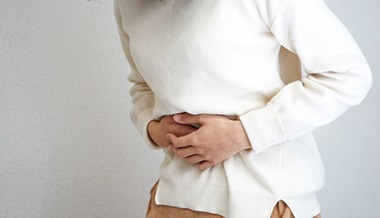Gallstones
What are gallstones?
Gallstones form when bile stored in the gallbladder hardens into stone-like material. Too much cholesterol, bile salts, or bilirubin (bile pigment) can cause gallstones.
When gallstones are present in the gallbladder itself, it is called cholelithiasis. When gallstones are present in the bile ducts, it is called choledocholithiasis. Gallstones that obstruct bile ducts can lead to a severe or life-threatening infection of the bile ducts, pancreas, or liver. Bile ducts can also be obstructed by cancer or trauma, but this is not related to gallstones.
What causes gallstones?
Cholesterol stones are believed to form when bile contains too much cholesterol, too much bilirubin, not enough bile salts, or when the gallbladder does not empty as it should for some other reason.
Pigment stones tend to develop in people who have cirrhosis, biliary tract infections, and hereditary blood disorders such as sickle cell anemia. The causes of these stones are uncertain.
What are the symptoms of gallstones?
At first, most gallstones do not cause symptoms. However, when gallstones become larger, or when they begin obstructing bile ducts, symptoms or "attacks" begin to occur. Attacks of gallstones usually occur after a fatty meal and at night. The following are the most common symptoms of gallstones. However, each individual may experience symptoms differently. Symptoms may include:
-
Steady, severe pain in the upper abdomen that increases rapidly and may last from 30 minutes to several hours
-
Pain in the back between the shoulder blades
-
Pain in the right shoulder
-
Nausea
-
Vomiting
-
Fever
-
Chills
-
Jaundice. A yellowing of the skin or eyes.
-
Abdominal bloating
-
Intolerance of fatty foods
-
Belching or gas
-
Indigestion
People who experience the following symptoms should consult their doctor immediately:
-
Sweating
-
Chills
-
Low-grade fever
-
Yellowish color of the skin or whites of the eyes
-
Clay-colored stools
Some people with gallstones do not have any symptoms. These stones are called "silent stones," because they do not interfere with the function of the gallbladder, liver, or pancreas, and do not require treatment in most cases.
The symptoms of gallstones may resemble other conditions or medical problems, such as heart attack, appendicitis, ulcers, irritable bowel syndrome, hiatal hernia, pancreatitis, or hepatitis. Always consult your health care provider for a diagnosis.
Who is affected by gallstones?
The following are suggested risk factors for gallstones:
-
Obesity. Obesity is a major risk factor for gallstones, especially in women.
-
Estrogen. Excess estrogen from pregnancy, hormone replacement therapy, or birth control pills appears to increase cholesterol levels in bile and decrease gallbladder movement, both of which can lead to gallstones.
-
Ethnicity. Native Americans have the highest rates of gallstones in this country and seem to have a genetic predisposition to secrete high levels of cholesterol in bile.
-
Gender. Women are twice as likely to develop gallstones than men.
-
Age. People over 60 are more likely to develop gallstones than younger people.
-
Cholesterol-lowering drugs. Drugs that lower cholesterol in blood can actually increase the amount of cholesterol secreted in bile, which, in turn, increases the risk of gallstones.
-
Diabetes. People with diabetes generally have high levels of fatty acids, called triglycerides, which increase the risk for gallstones.
-
Rapid weight loss. As the body metabolizes fat during rapid weight loss, it causes the liver to secrete extra cholesterol into bile, which can cause gallstones.
-
Fasting. Fasting decreases gallbladder movement, which causes the bile to become overconcentrated with cholesterol.
.png?h=159&iar=0&mh=360&mw=520&w=200&hash=2B7CD54846D35252017BBFB6D362202A)
How are gallstones diagnosed?
In some cases, asymptomatic gallstones are discovered by accident--during testing for another diagnosis. However, when pain persists or happens again and again, your health care provider may want to conduct a complete medical history and physical examination, in addition to the following diagnostic procedures for gallstones:
-
Ultrasound. A diagnostic technique that uses high-frequency sound waves to create an image of the internal organs.
-
Cholecystography. X-ray that shows the flow of contrast fluid through the intestines into the gallbladder.
-
Blood tests. These look for signs of infection, obstruction, jaundice, and/or pancreatitis.
-
Computed tomography scan (also called a CT or CAT scan). A diagnostic imaging procedure that uses a combination of X-rays and computer technology to produce horizontal, or axial, images (often called slices) of the body. A CT scan shows detailed images of any part of the body, including the bones, muscles, fat, and organs. CT scans are more detailed than general X-rays.
-
Endoscopic retrograde cholangiopancreatography (ERCP). A procedure that involves inserting an endoscope (viewing tube) through the stomach and into the small intestine. A special dye injected during this procedure shows the ducts in the biliary system.
-
Sphincterotomy. Opening the muscle sphincter, a ring of muscle around a natural opening that acts like a valve, wide enough so stones can pass into the intestine.
Treatment for gallstones
Specific treatment for gallstones will be determined by your health care provider based on:
-
Your age, overall health, and medical history
-
Extent of the condition
-
Your tolerance of specific medicines, procedures, or therapies
-
Expectations for the course of the condition
-
Your opinion or preference
If the gallstones cause no symptoms, treatment is usually not necessary. However, if pain persists, treatment may include:
-
Gallbladder removal (cholecystectomy). Once removed, the bile flows directly from the liver to the small intestine. Side effects of this may include diarrhea because the bile is no longer stored in the gallbladder.
-
Oral dissolution therapy. Drugs made from bile acid are used to dissolve the stones.
-
Methyl-tert-butyl ether. A solution injected into the gallbladder to dissolve stones.
-
Extracorporeal shockwave lithotripsy (ESWL). A procedure that uses shock waves to break stones up into tiny pieces that can pass through the bile ducts without causing blockages.
-
Contact dissolution therapy. An experimental procedure that involves injecting a drug directly into the gallbladder to dissolve the stones.



